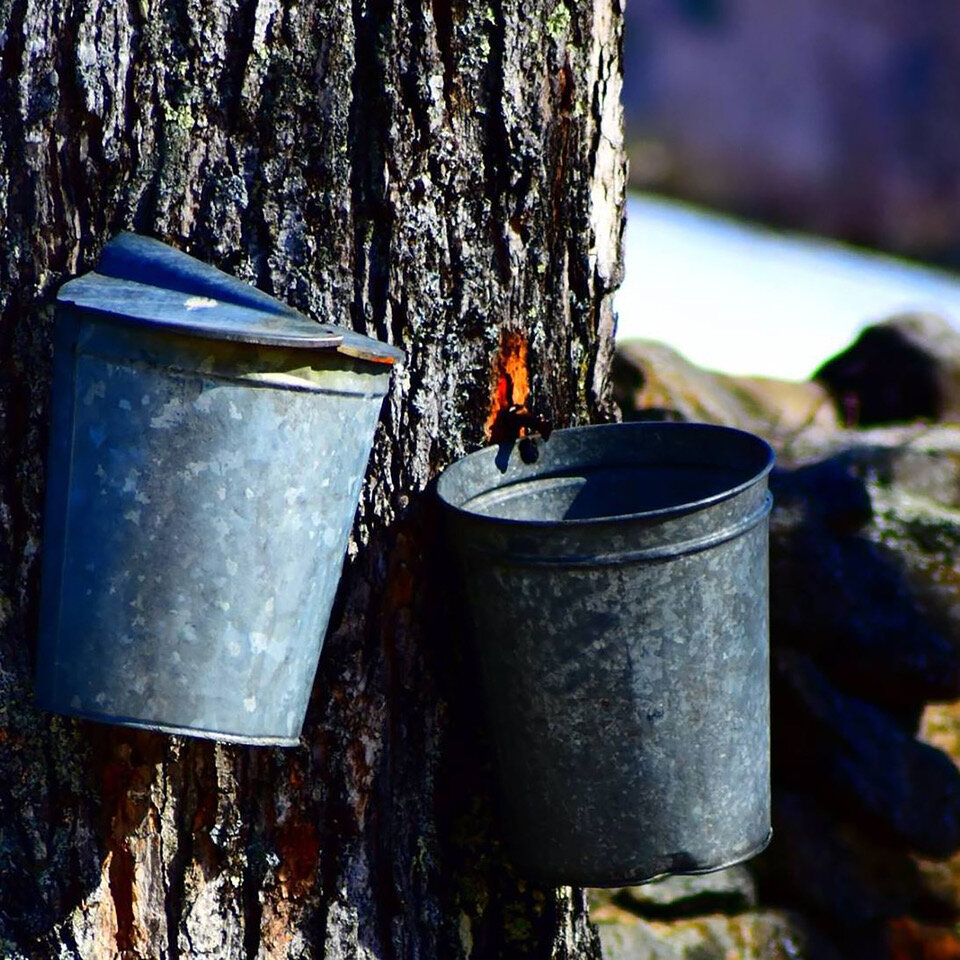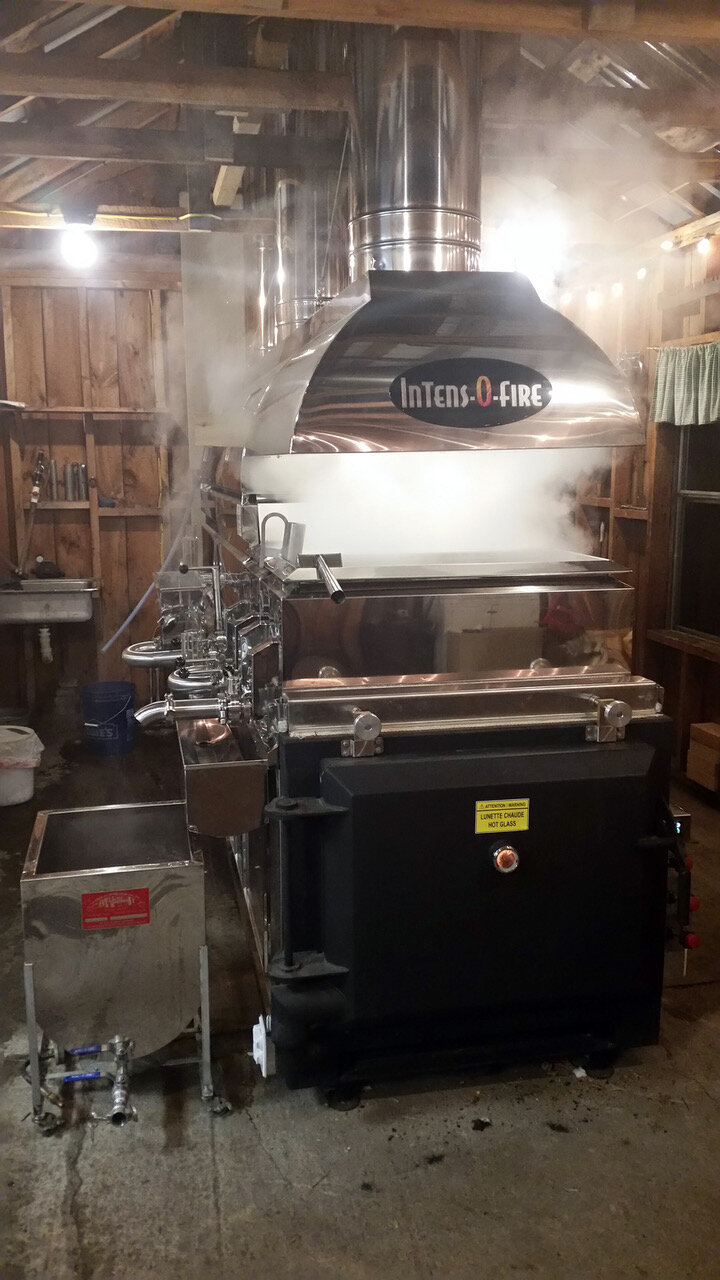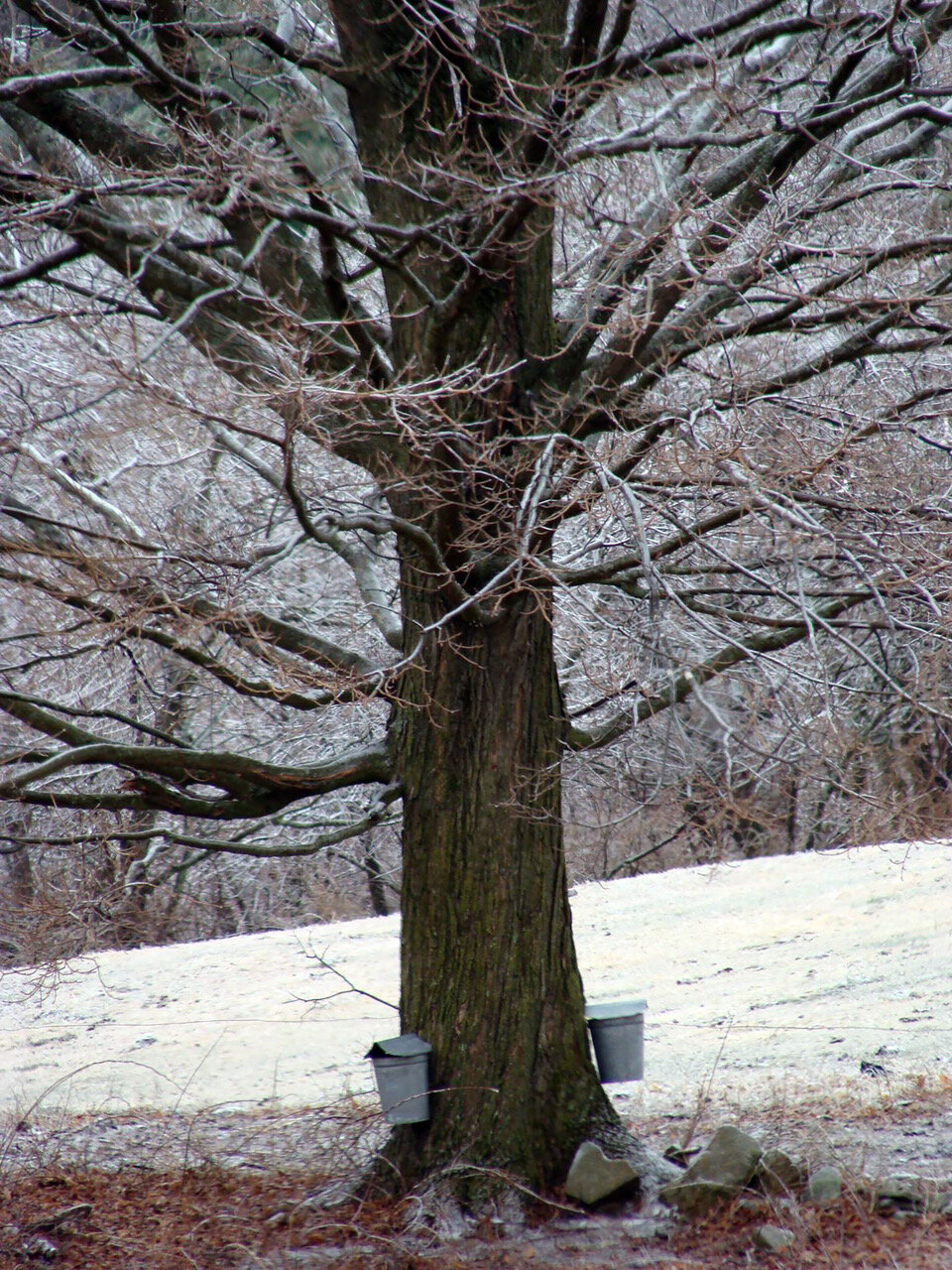By Thomas P. Caldwell

Walker’s Sugar Shack in Bristol. (Courtesy Photo)
The boiling of sap to make maple syrup is one of the lessons the indigenous people of the New World taught the early settlers arriving from Europe, and today those lessons remain the basis for New England’s maple syrup production. New techniques have been brought into play to make the operation more efficient, but, at its core, maple syrup production today is much the same as it was in the early days.
It still takes roughly 40 gallons of sap to produce one gallon of maple syrup, and collecting that sap depends upon the weather.
“To get the good sap ‘runs’ it needs to be below freezing at night and mid- to upper-40s during the day,” says Jason Walker who, with his brothers, Jeff and Joe, began Walker’s Sugar House in Bristol as a hobby in 2002.
“It seems early to start talking about maple season, given the current weather,” Jason said when contacted in mid-February. “We [have] started tapping the trees and the extended forecast is calling for some warmer temperatures … so we are optimistic spring is on its way.”

Classic sap collection is done with taps and buckets. (Courtesy Photo)
Walker’s Sugar House normally starts tapping the trees in February.
“Normally we get a few decent sap ‘runs’ towards the end of February, first of March, but every year differs slightly,” he said. “Everyone always asks how the sap season is going to be, and I always say I’ll tell you at the end of April! It is so hard to predict and really depends on the weather in March and April.”
He continued, “It is not so dependent on what the weather has been, but more on the cold nights and warm days during March and the first part of April. Usually the crazier the ‘up and down’ weather we get in March and April leads to a good sugaring season.
“Last year, we began the season during the last week in February and ended the second week in April, making for an exceptional year for syrup production.”
Normally, sap from the maple tree contains about two percent sugar, but in recent years, many producers have said the sugar content has declined to one percent. Jason says it is not unusual for the sugar content to vary from year to year and throughout the season.
Although Walker’s Sugar House has been actively producing syrup only since 2002, maple production on the Walker Farm has a long history, starting with Jason’s grandparents, Lois and Chester Walker Sr. They produced maple syrup off and on over the years, and Chet Walker Jr. produced syrup on the farm for a few years after returning home from college in 1970.
The current sugaring operation started with just a few hundred buckets, but today it has grown to more than 2,700 taps, using modern tubing and vacuum collection systems.
“Over the years, there has been a lot of technological advancements in maple syrup equipment and processes,” Jason says. “The sugar house started boiling on a 2-by-6 standard evaporator, which was upgraded to a 3-by-10 high-efficiency model. Other upgrades since 2002 include the use of a reverse-osmosis system and vacuum pump collection.
“With all the technological advancements, the sugar house still boils with wood,” he said.
Vacuum tubing allows syrup producers to bring the sap to large collection containers, rather than having to carry sap from the trees a pail at a time. Reverse osmosis can remove as much as two-thirds of the water in the sap before it is boiled, reducing the boiling time and the associated energy costs.
Jason says that, in an average year, Walker’s Sugar House produces about 1,000 gallons of maple syrup.

The modern evaporator condenses the sap into the maple syrup that customers want. (Courtesy Photo)
Walker’s has been a New Hampshire Seal of Quality Producer since the state started the voluntary program. New Hampshire Department of Agriculture inspectors verify that producers subscribing to the program are maintaining high-quality standards through periodic inspections.
The Walkers will be welcoming visitors to the Sugar House on the weekend of March 20-21, between 10 am and 3 pm, offering maple syrup, along with other maple products, for purchase. Maple products also are available at Walker’s Farm Stand during the summer months. To purchase syrup and other maple products at Walker’s Sugar House, call 603-744-8459 or email walkerssugarhouse@gmail.com to set up an appointment for pickup.

Alden Walker, a fourth-generation farmer, drives a tap into a maple tree. (Courtesy Photo)
For a list of sugar houses that produce maple syrup, please visit www.nhmapleproducers.com. (March is NH Maple Month; typically, many sugarhouses are open to the public, but due to this year’s Covid-19 restrictions, please call ahead to all locations.)
More about maple syrup
According to https://ift.tt/3sP5Ypj, Native Americans were the first to discover that sap from maple trees could be turned into maple syrup and sugar. We cannot be certain what the process was like those many years ago, or how the discovery was made, but maple sugaring has been going on for generations.
Today, the maple syrup production season generally runs from mid-February (or a bit later) until mid-April. The process, in simple terms, goes like this: sap in maple trees is frozen during the cold winter and when temperatures rise a bit, the sap in the trees begins to thaw. It then starts to move and builds up pressure in the tree. If you have noticed sticky sap oozing from any cut in a maple tree, this is the sap that is used for maple syrup production. Ideal conditions for the sap to flow are freezing nights and warm, sunny days, which create the pressure for a good sap harvest.

The classic New England maple scene with sap buckets on the tree. (Courtesy Photo)
If you drive around the state, you are likely to see buckets and plastic tubing around maple trees here and there. This is how maple producers tap the sugar maples. They drill a small hole in the tree trunk and insert a spout, and then a bucket or plastic tubing is fastened to the spout. If you assume the sap dripping from the tree looks like amber or darker colored maple syrup, you would be wrong. The sap at that point is clear. Once collected, it is taken to the sugarhouse and boiled down in an evaporator over a very hot fire. Steam rises and the sap becomes concentrated until eventually is turns to syrup. It is taken from the evaporator and filtered, graded and bottled.
Most of us love the taste of maple, but as those who make maple syrup will tell you, it is a long process and sometimes you stay up all night tending to the syrup. You watch the weather; you know that certain temperatures and conditions will make for a better season of maple syrup. You tap the trees, you tend to the sap house, you stoke the fire and you do it again and again.
Maple producers in New Hampshire love what they do, from opening up the sap house and getting everything ready for a late winter/spring season of maple syrup production to the first bottle of sweet maple syrup they produce each year.
"sweet" - Google News
March 04, 2021 at 07:54PM
https://ift.tt/3kHtCRQ
Sampling Something Sweet - Thelaker
"sweet" - Google News
https://ift.tt/2PcPlld
https://ift.tt/2KSpWvj
Bagikan Berita Ini















0 Response to "Sampling Something Sweet - Thelaker"
Post a Comment